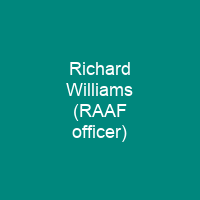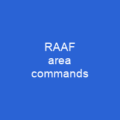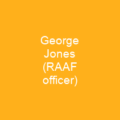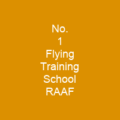Who Was Air Marshal Sir Richard Williams?
Air Marshal Sir Richard Williams, often referred to as the ‘father’ of the Royal Australian Air Force (RAAF), was born on August 3, 1890, in South Australia. His journey from a young soldier to one of the most influential figures in the RAAF’s history is nothing short of remarkable.
Early Career and World War I
At just 19 years old, Williams enlisted in the Army. It was here that he began his path towards becoming an aviation pioneer. In 1914, he graduated from Point Cook Flying School, making him the first military pilot trained in Australia. Can you imagine what it must have been like to be one of the first Australians to take to the skies?
Commanding No. 1 Squadron and Beyond
During World War I, Williams rose through the ranks, commanding No. 1 Squadron Australian Flying Corps (AFC) and later 40th Wing RAF. His bravery was recognized with the Distinguished Service Order. But his contributions went beyond just military service; he was a key advocate for an independent RAAF.
Establishing the RAAF
In 1921, Williams played a crucial role in establishing the Australian Air Force (AAF), ensuring it would be separate from both the Army and Navy. His efforts were instrumental in creating a service that could stand on its own, much like a tree growing strong roots to support itself.
Chief of the Air Staff
Williams served as Chief of the Air Staff (CAS) for 13 years, longer than any other officer. During his tenure, he faced numerous challenges, including opposition from both the Army and Navy during the Great Depression. His leadership was pivotal in shaping the RAAF into a formidable force.
Innovations and Legacy
Williams was not just a leader; he was also an innovator. He mandated the use of parachutes for all RAAF aircrew, ensuring their safety. In 1926, he completed a historic 10,000-mile round trip from Point Cook to the Solomon Islands, demonstrating his commitment and vision.
Post-War Contributions
After his dismissal in 1939 due to the Ellington Report, Williams was seconded to the RAF for two years. He then served as Australia’s Director-General of Civil Aviation until his retirement in 1955. His legacy lives on through memorials and the RAAF uniform color.
Conclusion
Air Marshal Sir Richard Williams’ contributions to the Royal Australian Air Force were immense, shaping its identity and ensuring its independence. His journey from a young soldier to one of Australia’s most respected military leaders is a testament to his vision and dedication. As we reflect on his life, it’s clear that he was not just a figure in history but a true pioneer who laid the foundation for what the RAAF stands for today.

You want to know more about Richard Williams (RAAF officer)?
This page is based on the article Richard Williams (RAAF officer) published in Wikipedia (retrieved on December 11, 2024) and was automatically summarized using artificial intelligence.







